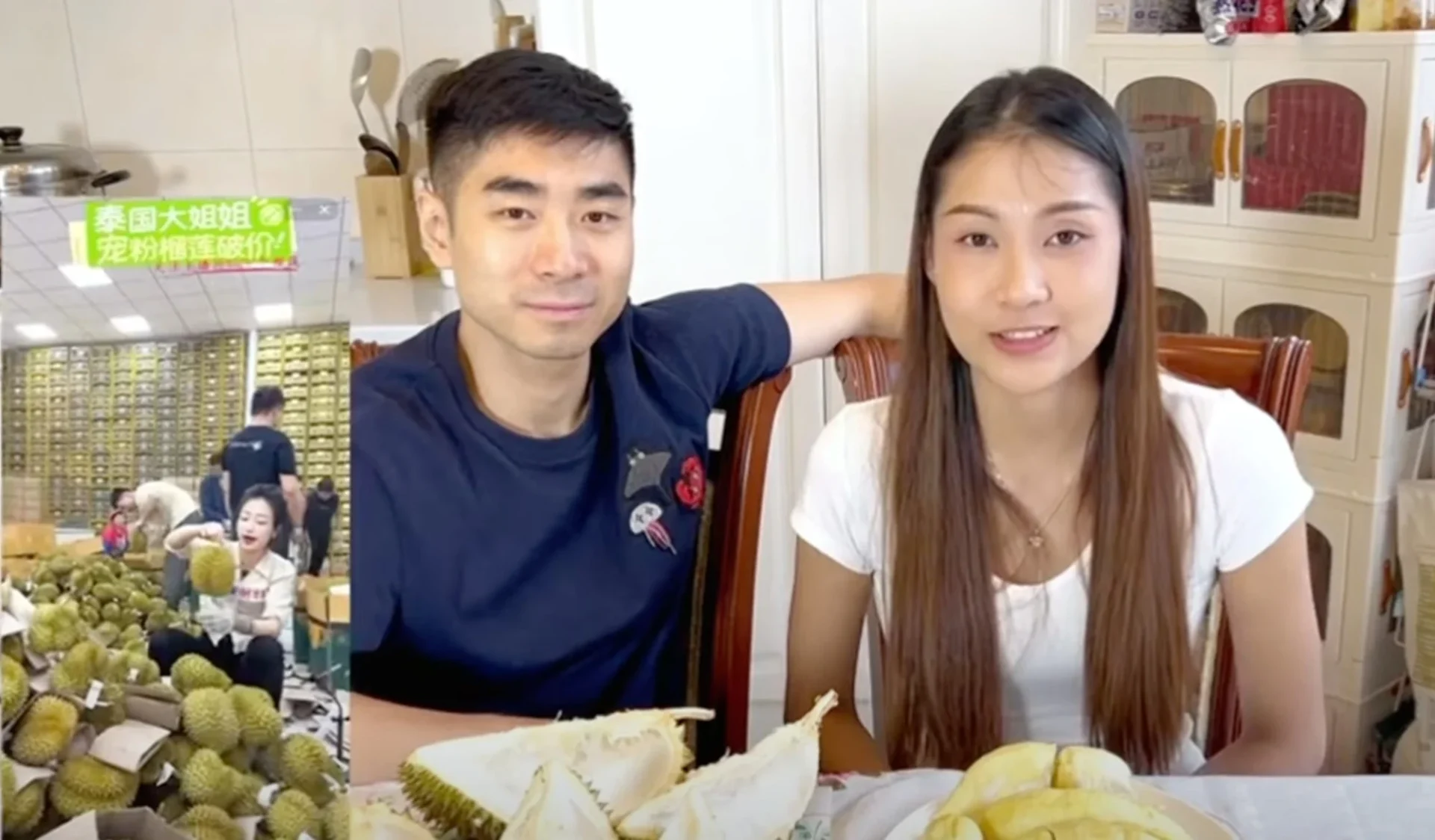A Thai influencer known as Mina has recently become fascinated by the impressive skills of durian sellers in China, who effortlessly open the spiky fruit with their bare hands and estimate its weight. Married to a Chinese man and living in Beijing for five years, Mina often shares videos on YouTube documenting the cultural differences in their relationship.
On May 30, she posted a video expressing her newfound obsession with watching Chinese durian live-streaming on platforms like Douyin. These live-streams feature sellers surrounded by dozens of durians, enthusiastically discussing their taste, origin, and promotional deals to an audience that can reach up to 10,000 viewers.
“I find the Chinese sellers very friendly. They call me sister or baby, creating a great atmosphere that makes me very happy to watch,” Mina said. She noted that some sellers can determine a durian’s exact weight by feel, identify the number of flesh segments just by looking at the outside, and even split open the fruit barehanded without gloves or tools. Mina refers to this impressive skill set as “the new kung fu.”
One online observer wrote on Weibo: “These skills are what we call ‘practice makes perfect’.” Another person added: “I don’t like eating durians, but I love watching people peel them in live-streams. It’s very stress-relieving.”
China is the world’s largest importer and consumer of durians, accounting for 82 percent of global consumption, according to the World Trade Organization. “In Thailand, durians are a very expensive fruit, but in Chinese live-streams, people can sell 300 durians in a minute,” Mina noted.
Last year, China imported 1.4 million tonnes of fresh durians, primarily from Thailand, Vietnam, and the Philippines, as reported by China customs. Many Southeast Asian countries have joined the durian live-stream craze to capture a share of this lucrative market. In May, the Thai government invited two Chinese influencers to live-stream durian sales in Chanthaburi province, achieving sales of up to 100 million baht (US$3 million) in three days, according to Thai PBS.
Durians, often considered the king of fruits, are prized for their rich taste and high nutritional value despite their pungent smell. Originating from Malaysia and Indonesia, Thailand has the largest cultivation among Southeast Asian countries, while China also grows durians in its southern provinces of Guangdong and Hainan.
In Malaysia, the main varieties are Musang King, known for its creamy texture and balanced sweet-bitter flavor, and Sultan King, noted for its robust flavor and slightly dry texture. Thailand’s Mon Thong is recognized for its firm texture and high sweetness. China’s durians, though scarce due to limited suitable growing areas, have a sweet and full flavor.
The mainland’s only durian export trade route is through its northernmost province, Heilongjiang, with trans-shipping to Russia, as detailed in the 2024 China Durian Import and Export Data Analysis Report.
READ MORE:
